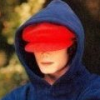#1: How to Flip Windows
Works on Windows Vista And Windows 7, and if Aero is on.
'This will Flip all the windows
#2: Open / Close CD ROM DriveCode:Shell("C:\Windows\System32\rundll32.exe DwmApi #105")
Start by declaring a function. This function is a call from OS.
Then to Open the CD Door:Code:Declare Function mciSendString Lib "winmm.dll" Alias "mciSendStringA" _ (ByVal lpCommandString As String, ByVal lpReturnString As String, _ ByVal uReturnLength As Long, ByVal hwndCallback As Long) As Long
To Close the CD Door:Code:Public Sub OpenCDDoor() Dim retval As Long retval = mciSendString("set CDAudio door open", "", 0, 0) End Sub
#3: Turn Monitor to Off/On/LowStateCode:Public Sub CloseCDDoor() Dim retval As Long retval = mciSendString("set CDAudio door closed", "", 0, 0) End Sub
First import this namespace:
Define constants:Code:Imports System.Runtime.InteropServices
Then declare a windows api function:Code:Public WM_SYSCOMMAND As Integer = &H112 Public SC_MONITORPOWER As Integer = &HF170
To Turn On:Code:<DllImport("user32.dll")> _ Private Shared Function SendMessage(ByVal hWnd As Integer, ByVal hMsg As Integer, ByVal wParam As Integer, ByVal lParam As Integer) As Integer End Function
To Turn Off:Code:Public Sub TurnOn() Dim x As Int32 'Main is the main form of the application. You can change it to any form of the application. x = Main.Handle SendMessage(x, WM_SYSCOMMAND, SC_MONITORPOWER, -1) End Sub
Put it to Lowstate:Code:Public Sub TurnOff() Dim x As Int32 'Main is the main form of the application. You can change it to any form of the application. x = Main.Handle SendMessage(x, WM_SYSCOMMAND, SC_MONITORPOWER, 2) End Sub
#4: Set Desktop WallpaperCode:Public Sub LowState() Dim x As Int32 'Main is the main form of the application. You can change it to any form of the application. x = Main.Handle SendMessage(x, WM_SYSCOMMAND, SC_MONITORPOWER, 1) End Sub
First import this namespace:
Then declare a windows API:Code:Imports System.Drawing.Imaging
'Constants to be used with the above API:Code:Private Declare Function SystemParametersInfo Lib "user32" Alias "SystemParametersInfoA" (ByVal uAction As Integer, ByVal uParam As Integer, ByVal lpvParam As String, ByVal fuWinIni As Integer) As Integer
'Create a new picture box:Code:Private Const SPI_SETDESKWALLPAPER = 20 Private Const SPIF_UPDATEINIFILE = &H1
Finally call the following code to change the wallpaper:Code:Dim pic As New PictureBox
#5: Toggle NumLock/CapsLock/ScrollLockCode:Dim ImageToSet As String="Full location of the image" Dim imagePath1 As String = Application.StartupPath & "\wall.bmp" pic.Image = Image.FromFile(ImageToSet) pic.Image.Save(imagePath1, ImageFormat.Bmp) 'Set the parameters to change the wallpaper to the image you selected: SystemParametersInfo(SPI_SETDESKWALLPAPER, 0, imagePath1, SPIF_UPDATEINIFILE) My.Computer.FileSystem.DeleteFile(imagePath1)
'Constants to be used:
API Function:Code:Private Const VK_NUMLOCK As Integer = &H90 Private Const VK_SCROLL As Integer = &H91 Private Const VK_CAPITAL As Integer = &H14 Private Const KEYEVENTF_EXTENDEDKEY As Integer = &H1 Private Const KEYEVENTF_KEYUP As Integer = &H2
Now to toggle the Numlock key, use:Code:Private Declare Sub keybd_event Lib "user32" ( _ ByVal bVk As Byte, _ ByVal bScan As Byte, _ ByVal dwFlags As Integer, _ ByVal dwExtraInfo As Integer _ )
To toggle the CapsLock key, use:Code:Public Sub NumLock() keybd_event(VK_NUMLOCK, &H45, KEYEVENTF_EXTENDEDKEY Or 0, 0) ' Release the key keybd_event(VK_NUMLOCK, &H45, KEYEVENTF_EXTENDEDKEY Or KEYEVENTF_KEYUP, 0) End Sub
To toggle the ScrollLock key, use:Code:Public Sub CapsLock() keybd_event(VK_CAPITAL, &H45, KEYEVENTF_EXTENDEDKEY Or 0, 0) ' Release the key keybd_event(VK_CAPITAL, &H45, KEYEVENTF_EXTENDEDKEY Or KEYEVENTF_KEYUP, 0) End Sub
Note: You can check the state of the NumLock/CapsLock/ScrollLock before toggling them:Code:Public Sub ScrollLock() keybd_event(VK_SCROLL, &H45, KEYEVENTF_EXTENDEDKEY Or 0, 0) ' Release the key keybd_event(VK_SCROLL, &H45, KEYEVENTF_EXTENDEDKEY Or KEYEVENTF_KEYUP, 0) End Sub
I will keep posting new tutorials from time to time.Code:'This will turn on NumLock if it is turned off. If Not My.Computer.Keyboard.NumLock Then NumLock() End If
Thanks and Regards,
Hassan
Thread: [Leeched] Visual Basic Tutorials
Results 1 to 12 of 12
Hybrid View
-
02-27-2010 #1
[Leeched] Visual Basic Tutorials

-
02-27-2010 #2
 ThreadstarterBobo's Trainer
ThreadstarterBobo's Trainer

- Join Date
- Feb 2010
- Gender

- Location
- Posts
- 759
- Reputation
 33
33- Thanks
- 110
- My Mood
-

Custom String Encoding / Decoding:
A custom Encode/Decoder:
Declare an integer:
To Encode:Code:Dim x as integer
To Decode:Code:Function Encode(ByVal str As String) Dim res As String = "" If Not str = vbNullString Then For i As Integer = 0 To str.Length - 1 If x = 2 Then Dim n As Integer = Asc(Mid(str, i + 1, 1)) + x res += Chr(n) x = 4 ElseIf x = 4 Then Dim n As Integer = Asc(Mid(str, i + 1, 1)) + x res += Chr(n) x = 1 Else Dim n As Integer = Asc(Mid(str, i + 1, 1)) + x res += Chr(n) x = 2 End If Next End If x = 2 Return res End Function
Example:Code:Function Decode(Str as string) Dim res As String = "" If Not str = vbNullString Then For i As Integer = 0 To str.Length - 1 If x = 2 Then Dim n As Integer = Asc(Mid(str, i + 1, 1)) - x res += Chr(n) x = 4 ElseIf x = 4 Then Dim n As Integer = Asc(Mid(str, i + 1, 1)) - x res += Chr(n) x = 1 Else Dim n As Integer = Asc(Mid(str, i + 1, 1)) - x res += Chr(n) x = 2 End If Next End If x = 2 Return res End Function
You can enhance it using advanced string parsing techniquesCode:Msgbox(Encode("JOIN THIS CHAT ABOUT VB ;)")) 'Will return "LSJP$UJMT"GICX!CFPWX!XF!=-" Msgbox(Decode("LSJP$UJMT"GICX!CFPWX!XF!=-")) 'Will return "JOIN THIS CHAT ABOUT VB ;)"
Regards
-
02-27-2010 #3
Selfwritten?
Thanks for sharing.
-
02-27-2010 #4
 ThreadstarterBobo's Trainer
ThreadstarterBobo's Trainer

- Join Date
- Feb 2010
- Gender

- Location
- Posts
- 759
- Reputation
 33
33- Thanks
- 110
- My Mood
-

Re: Self Written ?
Encoder/Decoder is self written.
The API tutorials aren't mine !!
And you're welcome !
-
02-27-2010 #5
 ThreadstarterBobo's Trainer
ThreadstarterBobo's Trainer

- Join Date
- Feb 2010
- Gender

- Location
- Posts
- 759
- Reputation
 33
33- Thanks
- 110
- My Mood
-

Extract Youtube Title and Download Link
This is how we can extract the Youtube Title:
First we need to import the following namespaces:
Then add this function to the application. This function gets the source code of any webpage.Code:Imports System.Net Imports System.IO
Now we need to parse the source code to extract the data we need:Code:Function GetPage(ByVal pageUrl As String) As String Dim s As String = "" Try Dim request As HttpWebRequest = WebRequest.Create(pageUrl) Dim response As HttpWebResponse = request.GetResponse() Using reader As StreamReader = New StreamReader(response.GetResponseStream()) s = reader.ReadToEnd() End Using Catch ex As Exception Throw New Exception("Failed to get source code !!!") End Try Return s
First we extract the Video Title using the following function:
'This function is optional and is not needed if you want to just download the video.
Then we use the following function to extract the video's download link:Code:Function GetTitle(ByVal URL As String) Dim result As String = "Couldn't extract title !!" Try If Not URL = vbNullString Then Dim c As String = GetPage(URL) Dim a1 As Integer = c.IndexOf("<title>") + 8 Dim a2 As Integer = c.IndexOf("</title>", a1) Dim title As String = Mid(c, a1, a2 - a1).Replace("YouTube", "") title = title.Trim title = title.Remove(0, 2) result = title End If Catch ex As Exception End Try Return result End Function
This is all the code.Code:Function getDownloadLink(ByVal URL As String) Dim result As String = "Couldn't extract link !!" Try If Not URL = vbNullString Then Dim c As String = GetPage(URL) Dim a1 As Integer = c.IndexOf("'VIDEO_ID': '") + 14 Dim a2 As Integer = c.IndexOf("'", a1) + 1 Dim id As String = Mid(c, a1, a2 - a1) Dim a3 As Integer = c.IndexOf("""t"": """) + 7 Dim a4 As Integer = c.IndexOf("""", a3) + 1 Dim t As String = Mid(c, a3, a4 - a3) result = id & "&t=" & t End If Catch ex As Exception End Try Return result End Function
Example:
If you want to download the video in high quality, insert "&fmt=18" or in HD then insert "&fmt=22" at the end of the Video URL.Code:System.Diagnostics.Process.Start("https://www.youtube.com/get_video?video_id=" & getDownloadLink("https://www.youtube.com/watch?v=u_0q0kL03Lg"))
Hope this helps !!
Regards
-
02-27-2010 #6
 ThreadstarterBobo's Trainer
ThreadstarterBobo's Trainer

- Join Date
- Feb 2010
- Gender

- Location
- Posts
- 759
- Reputation
 33
33- Thanks
- 110
- My Mood
-

RE: Give Credits
I googled all these functions long time ago so I don't know to whom these actually belong. I think originally they belong to Microsoft. If so, credits for API tutorials goes to Microsoft !!


-
02-27-2010 #7
Give credits then :P

-
02-27-2010 #8Wheres my GM? DAMN IT!



- Join Date
- Dec 2009
- Gender

- Location
- Posts
- 6,312
- Reputation
 382
382- Thanks
- 3,019
- My Mood
-

These are all standard MSDN , Not self written code at all, The ones that are written
"anyone with DIM"
are all leeched. (C&P)
But it doesn't matter, thanks for sharing.
-
02-27-2010 #9
 ThreadstarterBobo's Trainer
ThreadstarterBobo's Trainer

- Join Date
- Feb 2010
- Gender

- Location
- Posts
- 759
- Reputation
 33
33- Thanks
- 110
- My Mood
-

GMAIL Client
@[MPGH]NextGen1:
I don't understand "anyone with DIM" are all leeched. (C&P) !!!
What it means ???
Anywayz here's a Gmail client:
Create a GUI like the one shown below:

Then import this namespace:
Create a new listbox:Code:Imports System.Net.Mail
If you want attachments in your mail, then attach the following code to the attachment button:Code:Dim attachments As New ListBox
Code:OFD.Filter = "All Files (*.*)|*.*" If Not OFD.ShowDialog = Windows.Forms.DialogResult.Cancel Then For Each n As String In OFD.FileNames attachments.Items.Add(n) Next End If lblAtt.Text = "Attachments [" & attachments.Items.Count & "]:"
Finally attach the following code to the send button:
Hope this helps !!Code:'Check the textboxes: If Not senderID.Text.EndsWith("@gmail.com") Then MsgBox("You must enter your Gmail ID to send an email.") Exit Sub End If If pass.Text = vbNullString Then MsgBox("You must enter your password for the given ID.") Exit Sub End If If recievers.Text = vbNullString Then MsgBox("Please enter recipients of the email.") Exit Sub End If If subj.Text = vbNullString Then subj.Text = "No Subject" End If If emailbody.Text = vbNullString Then emailbody.Text = "No Body" End If 'If there are any attachments, calculate their size: Dim attchsz As Integer = 0 If attachments.Items.Count > 0 Then For Each n As String In attachments.Items attchsz += CInt(My.Computer.FileSystem.GetFileInfo(n).Length / 1024 / 1024) Next End If If attchsz > 10 Then MsgBox("You have crossed the size limit of the email attachment.") Exit Sub End If 'Try to send the mail: Try 'Create a new mail message: Dim msg As New MailMessage(senderID.Text, recievers.Text, subj.Text, emailbody.Text) 'If there are any carbon copies, attach them: If Not CCs.Text = vbNullString Then msg.CC.Add(CCs.Text) End If 'If there are any blind carbon copies, attach them: If Not BCCs.Text = vbNullString Then msg.Bcc.Add(BCCs.Text) End If 'If there are any attachments, attach them: If attachments.Items.Count > 0 Then For Each z As String In attachments.Items msg.Attachments.Add(New Net.Mail.Attachment(z)) Next End If 'Now enter the client info for your email. 'I got the Google's smtp server and port number on the web. Dim client As New SmtpClient("smtp.gmail.com", 587) 'Validate user... Dim Credentials As New System.Net.NetworkCredential(senderID.Text, pass.Text) client.Credentials = Credentials 'Some sites require secure sockets layer connection. Google is one of them, so enable the ssl: client.EnableSsl = True 'Finally send the message: client.Send(msg) Catch ex As Exception 'If error occurs, report it to the user: MsgBox("Error sending email !!" & vbCrLf & ex.Message) Exit Sub End Try 'If the mail is sent successfully, inform the user. MsgBox("Your email has been sent.")
Regards
-
02-27-2010 #10Wheres my GM? DAMN IT!



- Join Date
- Dec 2009
- Gender

- Location
- Posts
- 6,312
- Reputation
 382
382- Thanks
- 3,019
- My Mood
-

I determine leeched code based on 'Comments , Declarations, Decorations, You admit you got all these from google but yet you give no credit, your above gmail code matches tutorials online almost word for word .
I will close this thread if you don't give credit
If You get it from MSDN , Mark it MSDN, If you get it form codeproject, give credit,
last thing we want over here at mpgh.net is to be known as leechers or anything similar
,
'If for some reason, that is not ok with you, or you want to debate the matter, PM, don't discuss it further in here.
Read Updated Rules
https://www.mpgh.net/forum/33-visual-...2-24-10-a.htmlLast edited by NextGen1; 02-27-2010 at 08:26 AM.
-
02-27-2010 #11
 ThreadstarterBobo's Trainer
ThreadstarterBobo's Trainer

- Join Date
- Feb 2010
- Gender

- Location
- Posts
- 759
- Reputation
 33
33- Thanks
- 110
- My Mood
-

I was just asking that what leechers means, and have I already told you that I just remember that I googled the API functions a long time ago. And now i don't know where google linked me !!!
Plus the gmail code above is written by me (I just got the smtp server and port number from web as I mentioned), 40-50 minutes ago. I really don't get how it matched word by word !! ??????????? That is impossible !!!
Regards
-
02-27-2010 #12Wheres my GM? DAMN IT!



- Join Date
- Dec 2009
- Gender

- Location
- Posts
- 6,312
- Reputation
 382
382- Thanks
- 3,019
- My Mood
-

 Originally Posted by What I Said Above
Originally Posted by What I Said Above
What part of that did you not get?
Fact: Most of these are straight off MSDN site, The above is very similar, but it doesn't matter, just remember to give credit
This isn't a debate, I am sorry if it seems I am being offensive, Just keeping my section clean, and I like to keep the rules followed as well.
And we don't need a whole thread that essentially is MSDN, We all know where to go for that....
/Closed for being just like MSDN Library, if you don't know how to get there.
https://msdn.microsof*****m/en-us/default.aspx
You can get all these codes there
Last edited by NextGen1; 02-27-2010 at 08:34 AM.
Similar Threads
-
Visual Basic Tutorials
By NextGen1 in forum Programming TutorialsReplies: 1Last Post: 04-12-2012, 09:56 PM -
[Help] Visual Basic Tutorials
By ¥øµñg&Ðång£r in forum CrossFire Hack Coding / Programming / Source CodeReplies: 9Last Post: 05-02-2011, 08:27 PM -
[Tutorials] Mega Post of Visual Basic Tutorials !
By Noxit in forum Visual Basic ProgrammingReplies: 30Last Post: 09-02-2009, 09:09 PM -
C++ And Visual Basics Tutorial Vote
By GG2GG in forum Programming TutorialsReplies: 6Last Post: 08-11-2009, 03:49 PM -
[Tutorial]Visual Basic 6 Many Options Tutorial by Yogilek.
By yogilek in forum WarRock - International HacksReplies: 4Last Post: 10-05-2007, 07:34 AM


 General
General










